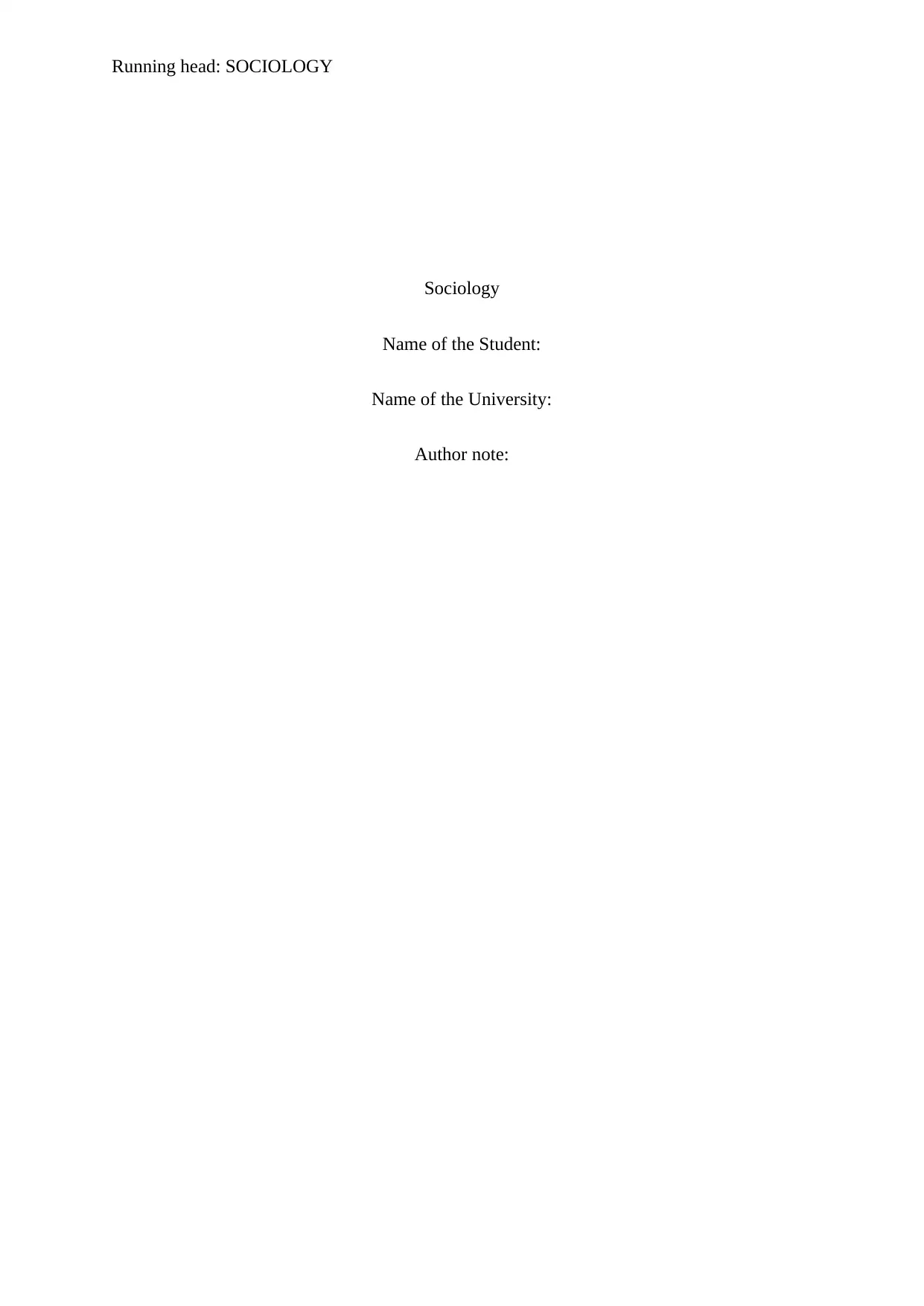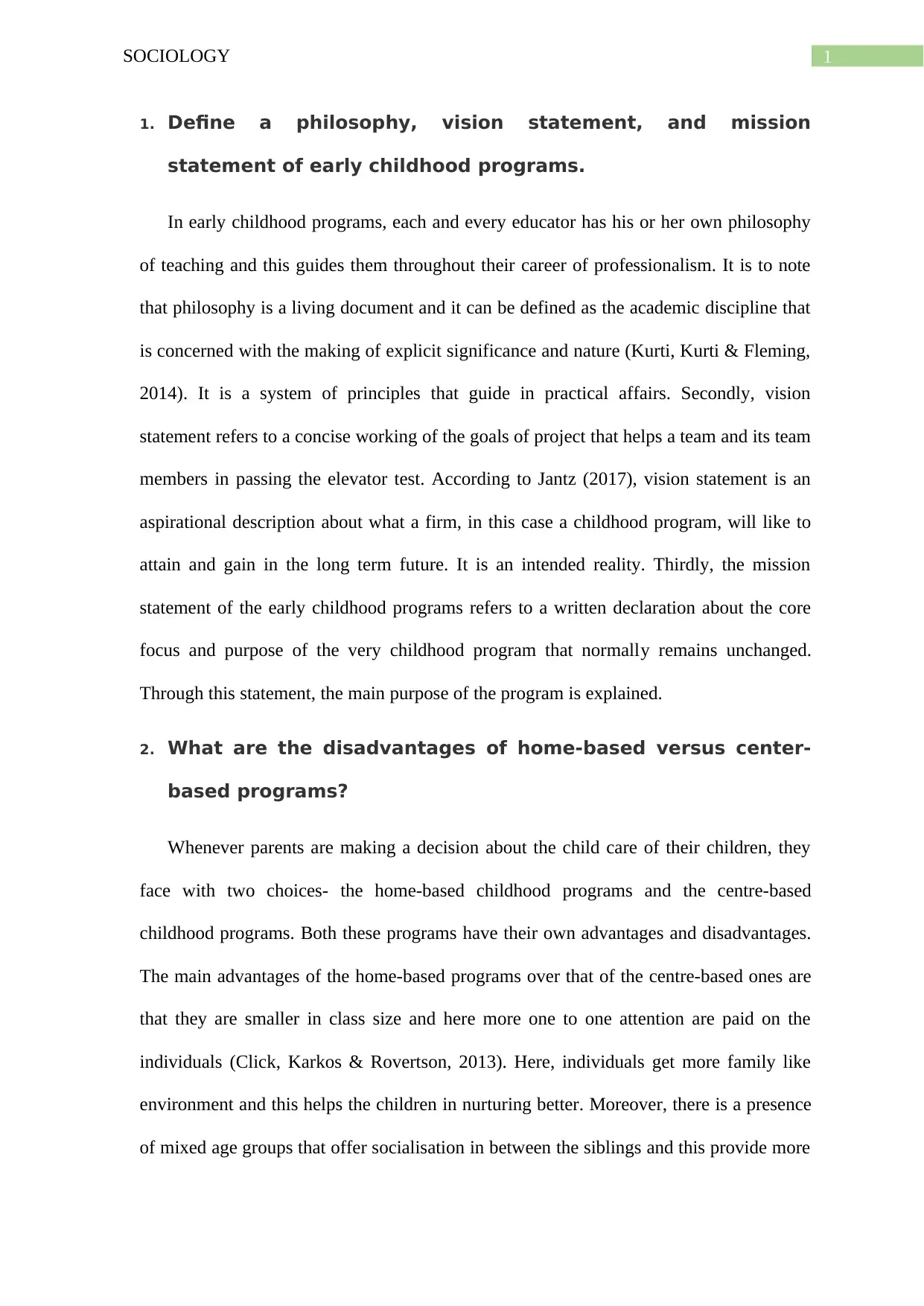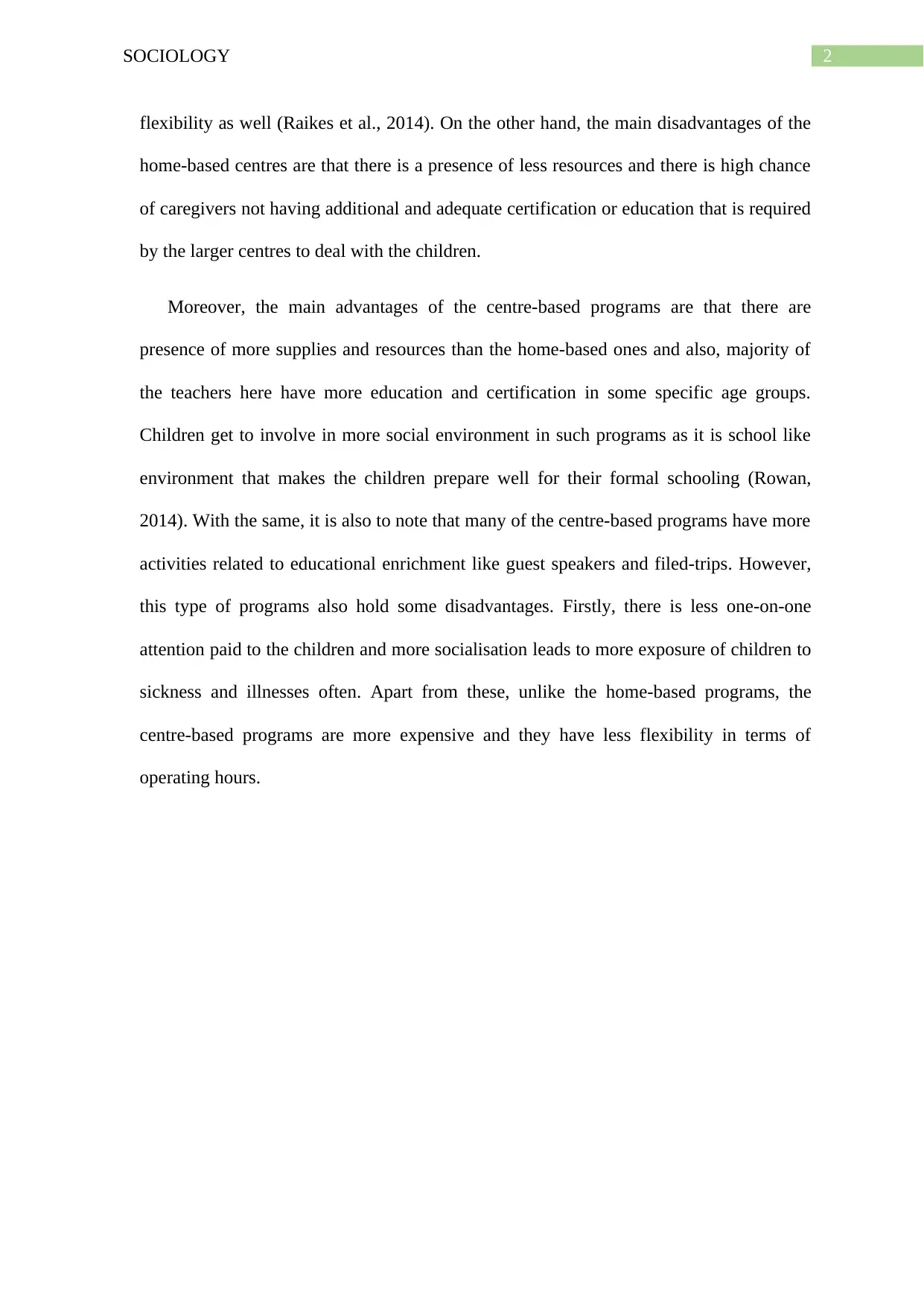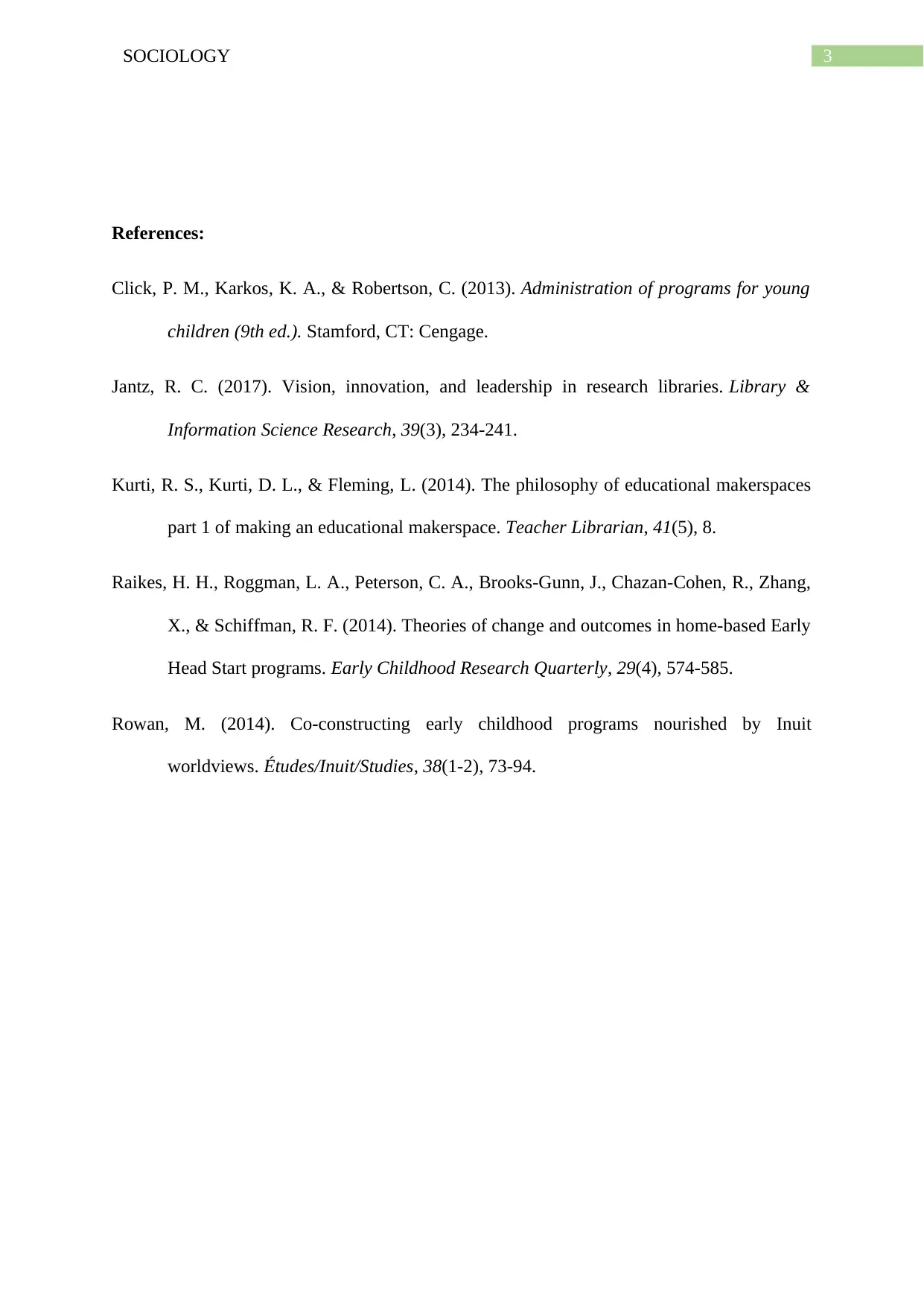EDUC 655: Philosophy, Vision & Mission Statements in Early Childhood
VerifiedAdded on 2022/11/25
|4
|781
|311
Homework Assignment
AI Summary
This assignment explores the foundational elements of early childhood programs, including the definition and significance of philosophy, vision, and mission statements. It clarifies how these statements guide educators and shape program goals. The assignment then delves into a comparative analysis of home-based versus center-based programs, outlining the advantages and disadvantages of each. Home-based programs are highlighted for their smaller class sizes, personalized attention, family-like environments, and mixed-age socialisation, while center-based programs are noted for their resources, educational enrichment, and preparation for formal schooling. The assignment also acknowledges the disadvantages of each model, such as limited resources and potential lack of caregiver certifications in home-based settings, and less one-on-one attention and higher costs associated with center-based programs. References are provided to support the information.
1 out of 4







![[object Object]](/_next/static/media/star-bottom.7253800d.svg)